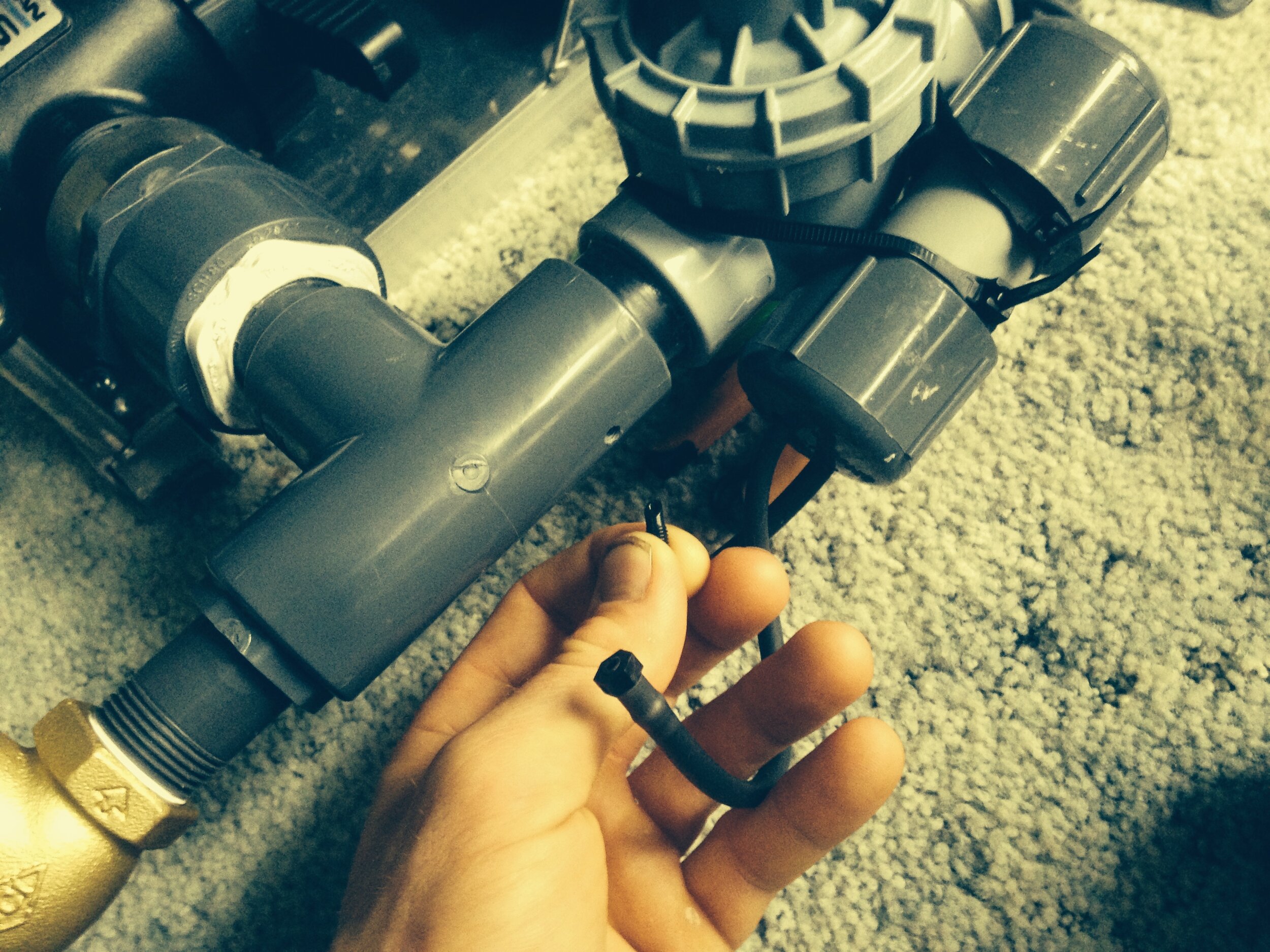
How to Connect PVC fittings for
Water Systems.

Male End vs. Female End Threaded Fittings
PVC fittings consist of two parts: a male end and a female end. The male end of the PVC fitting is threaded on the outside, and the threads on the female end of the PVC fittings are located on the inside. The threads are tapered to become smaller as they go which is actually a significant part of the design of the fitting responsible for the watertight seal PVC fittings can achieve. The fact that the threads on PVC fittings are tapered means that additional turns of the fitting beyond “sufficient” ( one or two more turns after handtight) causes the female threads to stretch, putting strain on the threads, which if overtightened too much, can split or break.
First, it is important to wipe down your threads to ensure they are free of debris, and then apply a PVC thread sealant tape such as teflon tape. Teflon tape is wrapped around (over) the made threads (only) in a clockwise direction (holding the fitting with the threads pointy directly at you). Don not use thread sealant paste (aka Pipe Dope) which is NOT formulated for use with PVC and can damage the connection easily by lubricating the threads so much that excessive over tightening (torque) causes the fitting to readily split or break. Pipe Dope is a paste that never dries, but occupies minute spaces between threads, and inevitably works its way into the pipe, and into the various valves, sprinklers, and drip emitters being used, clogging them.
Insert the male end into the female fitting and tighten the connection by hand slowly until the fitting will not turn any more. At this point, use a wrench to complete one or two more turns. Do not tighten your fitting past this point.
PVC Primer and Cement (glue)
are used as an adhesive for “slip” connections (that have NO threads) to have a watertight bond. PVC cement works in a different way from other adhesives; the cement itself breaks down part of the PVC and bonds the separate pieces on a chemical level. This makes the parts inseparable. PVC cements typically work in minutes.
After a primer (which aids in cleaning the connection and preparing the surface for the glue) is applied and the primer is still wet, apply the PVC cement liberally before inserting and bonding the two parts and hold the connection in place as it dries for approximately 10-20 seconds to prevent “pipe push-out” ( caused by air displacement effects in the pipe ) .
Different Grades of PVC.
The most common are “Schedule 40”, and “Schedule 80” which is twice the wall thickness of Schedule 40. Other grades are “Class 200” and “Class 315”, whose numbers correspond to a max water pressure rating for the pipe (200 psi and 315 psi). Use the same schedule pipe and fittings to preventing splitting and leaking. Pipe size and fitting schedule should be the same among parts no matter what. .
